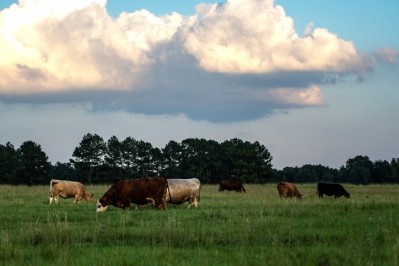‘Regenerative agriculture could reduce volatility in the feed system’

The publication includes cross-sector examples of what is being done across the US and the barriers faced in scaling solutions.
Regenerative practices have the potential to deliver wide-ranging benefits – including the restoration of soil health, water quality and biodiversity; and equitable distribution of value and of risk throughout agricultural supply chains – but progress in the US agriculture sector is fragmented, noted the publication.
An urgent shift from conventional to regenerative systems is needed, according to the report. The document evaluates the role that various actors from policy makers and brands to investors and non-profits have in driving change.
The report also outlines a new, seven-point roadmap on how agriculture can shift from extractive to regenerative practices, recognizing that the food industry and other sectors continue to face severe disruption from the COVID-19 crisis.
Ensuring robust animal feed and livestock production
When asked how regenerative agricultural practices could deliver robust animal feed and livestock production in the future, Lesley Mitchell, associate director, sustainable nutrition, Forum for the Future, told FeedNavigator:
“Feed is a major component of both the cost and climate impacts of animal production – accounting for almost half of all emissions overall, rising to three quarters in the case of poultry production. So, systems of feed production that can act as a carbon sink, actively enabling carbon to be returned to soils, have huge potential for boosting sustainability of both feed and livestock farming.
“Regenerative systems are also likely to support much more diverse production and enable innovation in feed crops. Where major feed staples such as row crops are sown, cover crops and other regenerative practices can keep the nutrients in the soil, enabling resilient productivity.”
Regenerative practices build soil health and thus increase resilience of the farming systems to changing weather patterns, she said.
“Climate trajectories show that going beyond 1.5 degrees of global warming is likely to bring major losses in crop nutrients, productivity, and increasing extreme weather events. We have a short window of time to reconfigure how we produce feed, and a huge untapped opportunity to benefit from adopting regenerative practices. In a context where it is estimated the US loses nearly a billion tons of soil a year, the urgency to act could not be starker.”
Financial benefits
Of course, any shift must be financially viable, acknowledged Mitchell.
Three areas where regenerative practices could improve production include:
- Increasing resilience of farming systems to changing weather patterns and extreme events such as drought, thus reducing volatility in the feed system, and consequent impacts on pricing.
- The increasing interest globally in carbon markets, driven by major ‘net zero’ climate commitments not just from food producers but major global businesses such as IT giants like Microsoft, show the potential for financially rewarding feed production systems that enable positive carbon sequestration from the environment into soils – and could provide valuable new revenue streams.
- Increasingly, we will see ecosystem services being incentivized and valued in policy and fiscal measures such as the developing agricultural policies in the EU, from increasing biodiversity, such as pollinators, and reducing pollution through agricultural inputs, she said. “Wherever you sit in the feed supply chain, exploring regenerative practices could transform your business model to be more robust, resilient and future-fit.”
Mitchell said feed needs to be seen in the context of a regenerative food system – as part of a system that delivers sustainable nutrition that is good for people and the planet.
“With a huge global spotlight on livestock production’s environmental impacts, and increasing acceptance of meat and dairy substitutes, the way feed is produced will have an increasingly visible role as part of design of sustainable livestock systems.
“Stakeholders across the food and feed system have an interest in these regenerative solutions, and the need for collaborative effort has never been clearer: supporting transition to innovative farming practices, new routes to market, and advocating for an enabling policy and financial environment,” she added.
Is regenerative agriculture a US only trend?
“This research focused on the US, and encompassed US and international actors influencing agriculture from a diverse range of perspectives – commodity companies, food manufacturers and retailers, major crop producers and philanthropists and those in the financial sector alongside grassroots farmers and non-profits.
"While some challenges will be context specific, the core levers for change we identified are likely to be highly adaptable to other regions: from the need for investment in transition and knowledge building, robust data and metrics, an investment focus that looks to the value of carbon and ecosystem services, new market models, and most importantly increasing the influence of farmers in decision-making," explained Mitchell.
On a global level, she said, the attention to regenerative agriculture is part of a shift in focus toward nature-based solutions.
“This is growing rapidly, both as a policy focus in UN climate talks, as part of Food System Dialogues, and toward the major global Food Systems Summit in 2021.”
'We will need to act together now'
In terms of real evidence of a momentum behind regenerative agriculture in the US, she said a range of players across diverse sectors contributed to Growing our Future including major international food and beverage manufacturers, commodity suppliers, feed producers, farmers, investors, philanthropists and non-profits.
“Regenerative agriculture is a priority focus for major investment and innovation initiatives such as Foodshot, supported by the Rockefeller Foundation and Rabobank Corporate Investments Innovation Fund, while Indigo Agriculture and others are incentivizing investment in farming practices that deliver carbon sequestration as a means of getting to ‘net zero’ carbon emissions.
“Major companies like General Mills, Danone, Cargill are actively trialing and introducing regenerative practices in their supply chains, with companies such a McDonald’s focusing on both regenerative farming and feed sustainability.
“The World Business Council for Sustainable Development and Sustainable Agriculture Initiative are promoting collaborative efforts, and diverse farmers groups are closely engaged in this shift.”
However, the challenge to date has been the fragmentation of all these efforts, stressed Mitchell.
A key aim of Forum for the Future’s work, therefore, was to bring these diverse perspectives together and develop shared goals for a regenerative agriculture system that anyone could get behind and identify what their organizations could do to enable the shift to regenerative production, she said.
“But we shouldn’t sugar coat the immense challenge we face in this shift. Growing our Future identified 16 key barriers, from fiscal measures such as crop insurance, to markets built to enable monocultures, to an absence of accounting for environmental impacts and benefits. If we are to seize this opportunity to pull those levers of change, we will need to act together now.”








